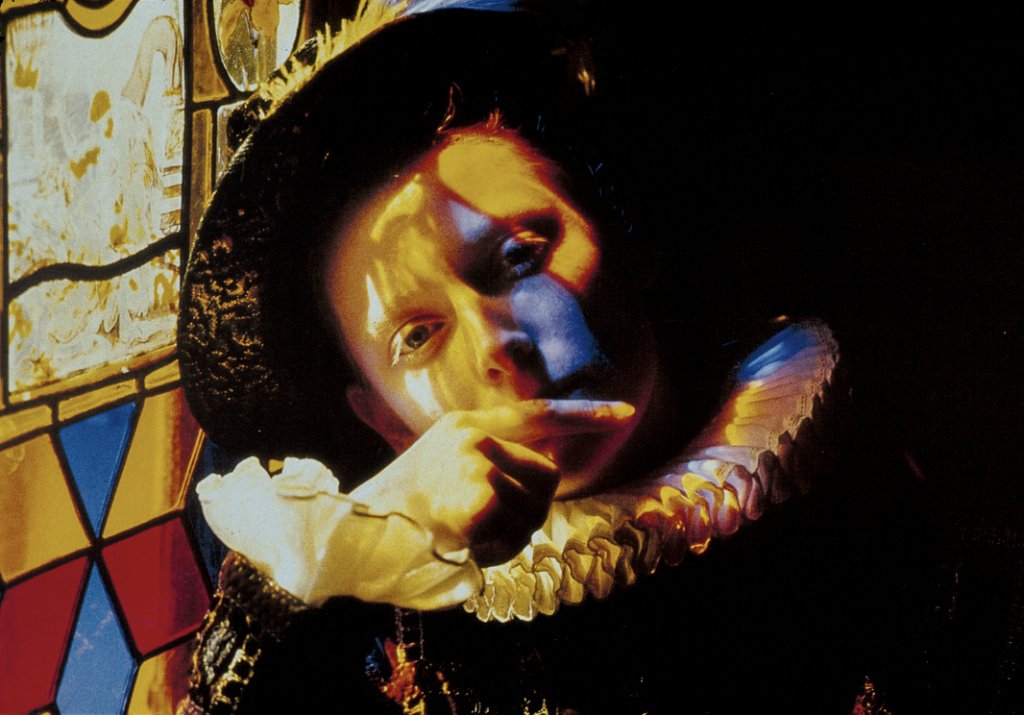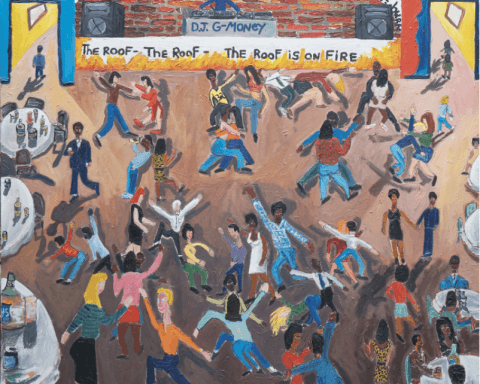
Virginia Woolf’s 1928 novel Orlando: A Biography, tells the story of a poet born in Elizabethan England who lives for three centuries. Along the way the main character, Orlando, meets several key figures in English literature and mysteriously changes sex from male to female, making the novel both a history of English letters and an early example of queer fiction.
In 1992, Orlando was adapted for the screen by Sally Potter, with Tilda Swinton in the lead role. While securing financing for the film, Potter photographed Swinton in the role of Orlando, producing photobooks which included a treatment for the film. Now, Swinton herself has returned to the subject matter and form, curating an exhibition of photography that examines gender and sexuality, spanning from the early-1970’s to the present.
Organized by Aperture, New York, Orlando made its West Coast debut at McEvoy Foundation for the Arts (MFA) in Dogpatch. Orlando is MFA’s first co-produced exhibition since it opened in 2017. The roster of contributing artists includes Zackary Drucker, Lynn Hershman Leeson, Jamal Nxedlana, Elle Pérez, Walter Pfeiffer, Sally Potter, Viviane Sassen, Collier Schorr, Paul Mpagi Sepuya, Mickalene Thomas, and Carmen Winant.
Six of Potter’s 1988 preproduction photographs are included in the exhibition. These prints create the groundwork for the show, as the novel’s initial photographic interpretation. Swinton can be viewed portraying Orlando as male and female, throughout various historical periods.

Mickalene Thomas offers a series of portraits of the fictional Orlando and Queen Elizabeth I, casting models who embody fa’afafine, a third-gender community in Samoa. Thomas delivers with her signature style, a deluge of pattern and color, where Potter’s portraits are quieter, with a mostly muted palette. Paul Mpagi Sepuya recreates the novel’s opening scene in sparse, quiet pictures. Carmen Winant re-photographs the book’s original illustrations overlaid on pictures of her nude body.
Drucker, Nxedlana, Pérez, Pheiffer, and Shorr depart from direct interpretations of the novel with documentary portraits of queer and transgender individuals. Schorr’s photographs, Untitled (Casil) 2015-2018, are perhaps the most thematically striking. The series of seven prints follow one individual through a gender transition from female to male, mirroring Orlando’s own journey.
Viviane Sassen’s submission, Venus & Mercury, 2019, is an experimental departure. Sassen photographs Greek sculptures and paints on the prints, thereby reexamining a foundation of art history, and a culture in which gender fluidity was more commonplace. The most successful of these is also the most direct: a closeup of a statue’s genitals, where the penis has broken off. Sassen highlights this damage with a wash of pink paint, suggestive of castration and menstrual blood.
San Francisco art scene legend Lynn Hershman Leeson offers a selection from her series Hero Sandwich, in which she collages publicity photographs of celebrities, often mixing male and female stars. The resulting Rowlands/Bogart (Female Dominant),1982, and Bowie/Hepburn, 1983, are ambiguously gendered portraits, suggesting that gender itself to be performative.
“I have come to see Orlando as a story about the life…of a human striving to become liberated entirely from the constructs of…gender or social norms,” said Swinton.
Perhaps the exhibit’s only shortcoming is that it can feel like a too-broad survey, rather than a deep contemplation. But this is the form of Orlando: just as the novel surveys English letters, the exhibition reviews recent queer photography. Swinton offers an opposition to social hegemony, to binaries, to limitations, and reminds us that both gender and art can be ambiguous and that freedom exists in that expanse.


